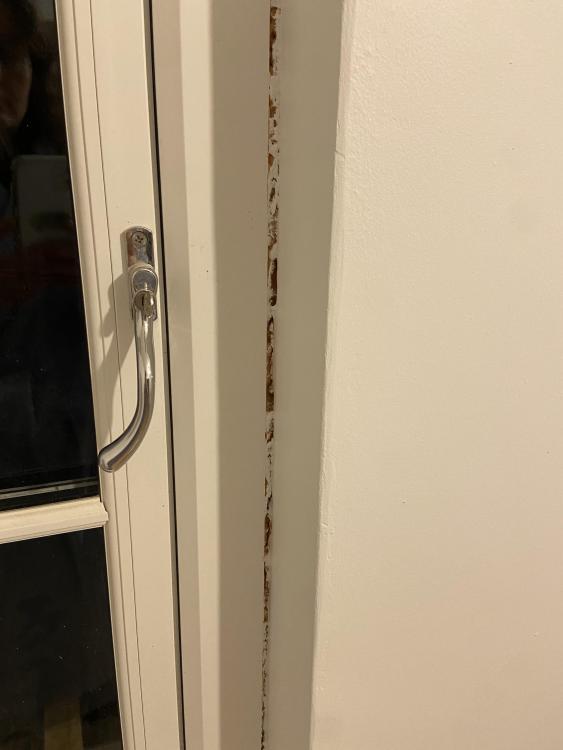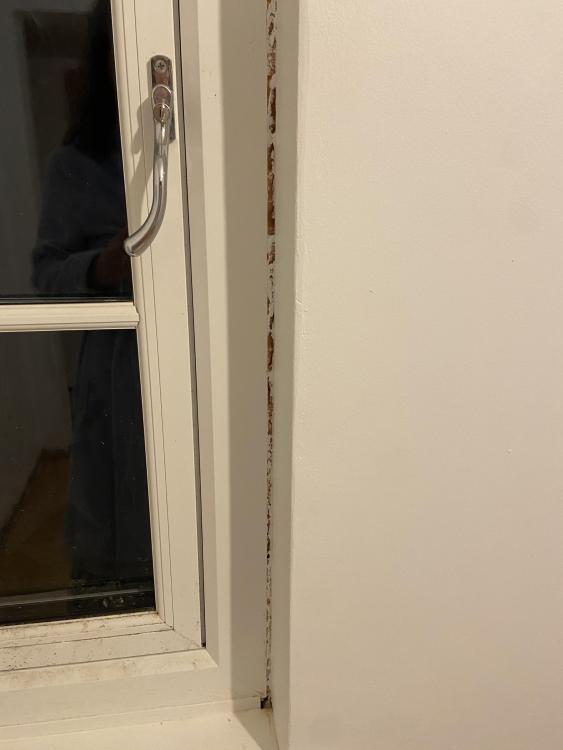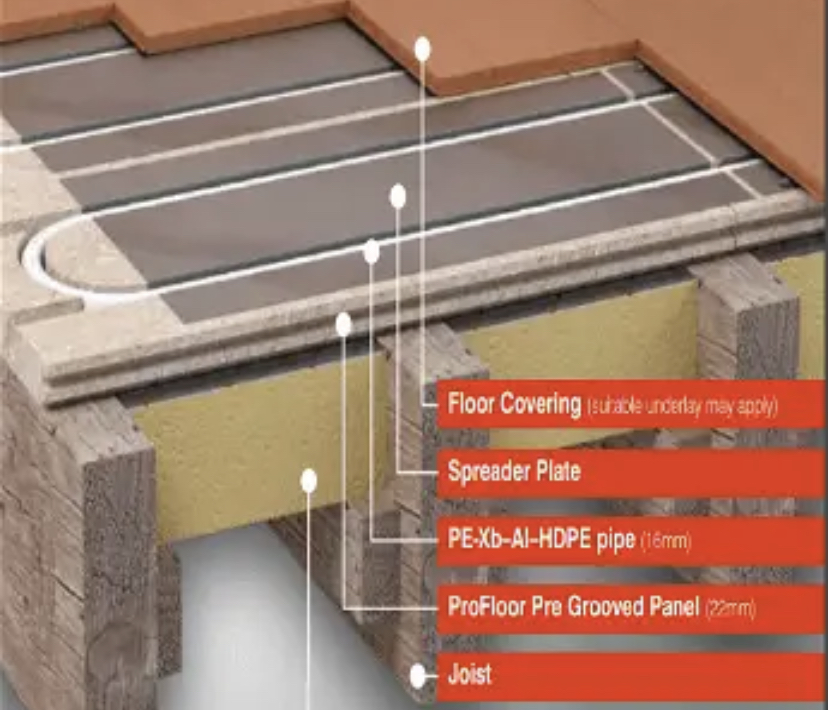
SanMan
Members-
Posts
26 -
Joined
-
Last visited
Recent Profile Visitors
The recent visitors block is disabled and is not being shown to other users.
SanMan's Achievements

Member (3/5)
1
Reputation
-
A few years ago, we had new windows fitted and in places were left with slightly large gaps between the frames and reveals. We don’t want to use plastic trims or sealant.We also don’t want to simply plaster over the gaps because then it looks like there is a small section of wall next to the window before it does a right turn into the reveal. What is the best way to fix this without replastering the entire wall? Is there any way of attaching a new corner bead at the front of the reveal (by recessing it into the existing plaster or overlaying/feathering it in), fitting a piece of plasterboard into the reveal and then finishing it with plaster? Or are there other options? Thank you.
-
Thank you for your replies. 😊
-
First Floor UFH - Role of Subfloor Insulation
SanMan replied to SanMan's topic in Underfloor Heating
Thank you. We have a very expensive prime engineered oak floor, so I am very reluctant to raise the temp above the manufacturer’s recommendation - in fact, when the probe triggers a switch off at 27, the residual heat often takes a while to reduce and the probe reads as high as 28 - so increasing the cut off would really take it nearer 29 or beyond - not a risk I am willing to take. The system performed fine all last winter. I think there must be sludge in the loops or air. I noticed last night that the pressure gauge is slightly down on target and the “shot glasses” on the flow meters have black stuff in them, making them hard to read. No idea how to clear that without my plumber who is not getting back to me. Thank you for your help. -
First Floor UFH - Role of Subfloor Insulation
SanMan replied to SanMan's topic in Underfloor Heating
How can you tell? Cold spots? It is much harder to feel for cold spots on a floor (compared to a radiator). And how do I bleed? Open the bleed valves on the manifold? Thank you. -
First Floor UFH - Role of Subfloor Insulation
SanMan replied to SanMan's topic in Underfloor Heating
-
First Floor UFH - Role of Subfloor Insulation
SanMan replied to SanMan's topic in Underfloor Heating
Yes. I read one article once where they said cut it 5 mm LARGER to ensure a good fit. 🤔 The problem is the joists are tapered/uneven in themselves and using foam when working in a ceiling against gravity is no fun. So I thought 100 mm Rocksilk will solve s multitude of fitting issues and that can easily be oversized and will still stay in. -
First Floor UFH - Role of Subfloor Insulation
SanMan replied to SanMan's topic in Underfloor Heating
And how do you feel about 100 mm Rocksilk? Much easier to fit than Celotex. And would it need to be foil faced like the Celotex? Thank you. -
First Floor UFH - Role of Subfloor Insulation
SanMan replied to SanMan's topic in Underfloor Heating
Yes. I was wondering if that is ok. No need for air gap? I guess that would defeat the object, having read your other reply. Thank you. -
First Floor UFH - Role of Subfloor Insulation
SanMan replied to SanMan's topic in Underfloor Heating
That is really helpful. Thank you for your advice. 😊 -
Hi I want to insulate an internal floor void. I have to do this from underneath as the floor above is finished plus the room below needs a new ceiling. The joist centres vary from 290 to 350 mm, so I gather Celotex would be a nightmare, also because the joists are frequently tapered. The joists are 200 mm tall. So I was going to use 100 mm Rocksilk slabs. My questions: 1. Should I opt for foil faced? What is the benefit? Which way should the foil point - up towards floor or down towards ceiling? The main aim of the exercise is to reduce downward heat loss from the UFH floor above. 2. Do I need an air gap between the insulation and the floor above? Or is the 100 mm void left between slab and ceiling below sufficient, especially because the ceiling will have downlights. 3. What is the best way to secure Rocksilk slabs from underneath, to stop displacement, sagging and ensure good contact with the floor above? Thank you.
-
First Floor UFH - Role of Subfloor Insulation
SanMan replied to SanMan's topic in Underfloor Heating
Good idea. The ceiling underneath is a mess and has to come down anyway. I wonder if I might just take one sheet down and insert an insulation slab, to see what that does to the surface temp feel of the floor. PIR is a nightmare between our joists because of the age of the house. No two joist bays are the same and as the timber has expanded and contracted over time, the joists are a tiny bit “wriggly” (not 100% flat/straight) - so I was going to use 100 mm Rocksilk slabs as they are more accommodating if cut slightly too large. You know what fun it is to try to cut PIR exactly right! Thank you. 😊 -
First Floor UFH - Role of Subfloor Insulation
SanMan replied to SanMan's topic in Underfloor Heating
-
First Floor UFH - Role of Subfloor Insulation
SanMan replied to SanMan's topic in Underfloor Heating
Thank you for the reply. The layers are actually like this (starting from the bottom up - some insulation, routered chipboard, spreader plates, thin Tuplex underlay, Kahrs oak engineered flooring). In other words, the spreader plates are on top of/bedded into the routered chipboard, not the other way round. I attach a photo. The thing I am missing from that photo is a slab of insulation. My question is will adding insulation make much difference, given there is a heated room below. The floor joists are 200 mm tall, so the void is quite spacious. There is some insulation there, but only loose full fibreglass. And if I add insulation slabs, should they be pushed right up against the chipboard. And should they be foil face up? Thank you. 😊 -
First Floor UFH - Role of Subfloor Insulation
SanMan replied to SanMan's topic in Underfloor Heating
Thank you for your reply. It is my daughter’s room, so in the school holidays especially she spends long periods in there. It is then used more like a living room and as you know they are set slightly warmer than bedrooms. Also, 18 is the point it gets to and then the floor protection probe switches the heating off until the boards have cooled enough. It switches back once the temperature has dropped to nearer 17.5 - so in practice the room is rarely at 18 for all that long, but just under. My question is really: is my concern of heat loss into the ceiling void below valid? Or is it not worth upgrading the insulation and directing the heat upward as the room below is heated? Thanks. -
First Floor UFH - Role of Subfloor Insulation
SanMan replied to SanMan's topic in Underfloor Heating
Thanks. Flow temperature as in temperature selection at mixing valve? Doesn’t this just cause the limiting function to kick in sooner? Limit is set at 27 degrees. The mixing valve is presently set to 50 degrees, but I understand it can be increased to up to 55 for suspended timber floors, provided that you always have a working floor temp probe to protect the floor. I must admit it sounds like this spreader plate contact problem is an inherent drawback of this type of system because truly, I cannot see what could have been done differently. Thank you so much.





